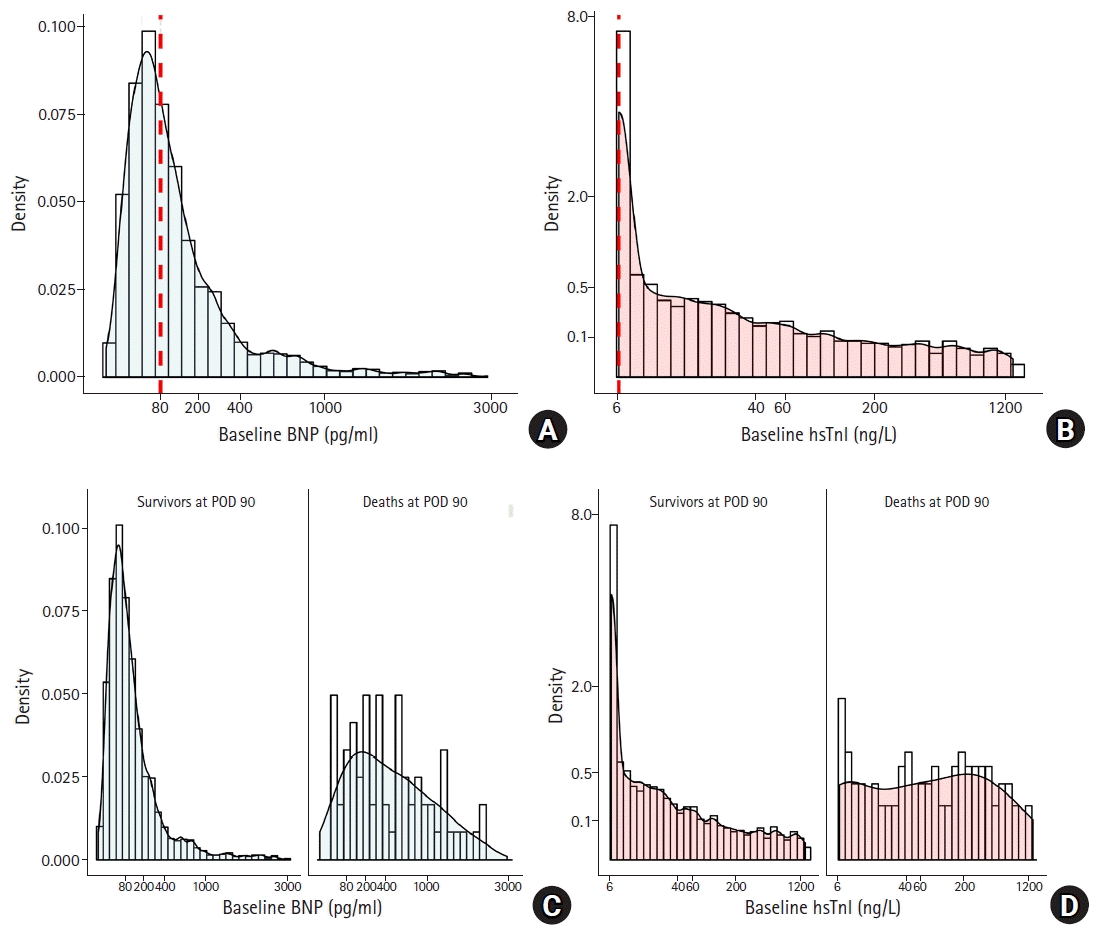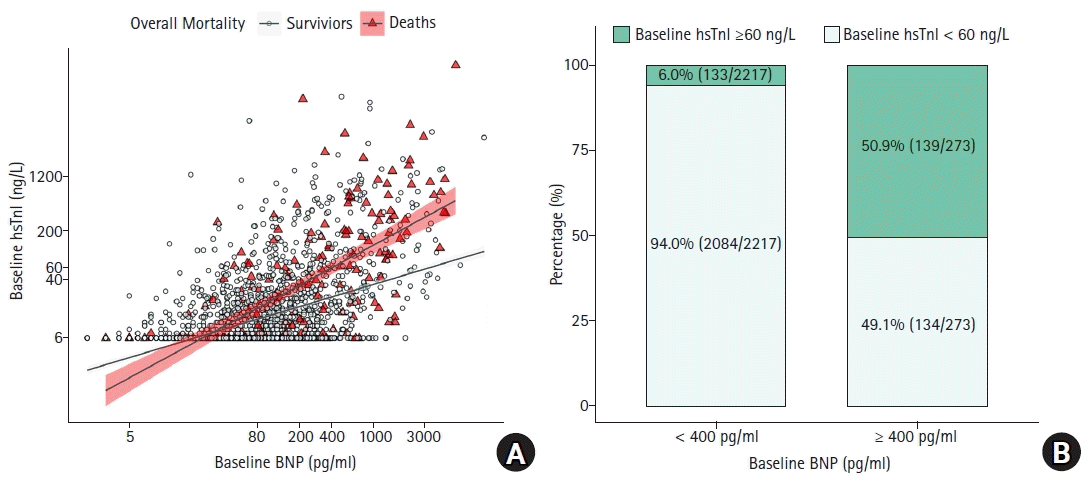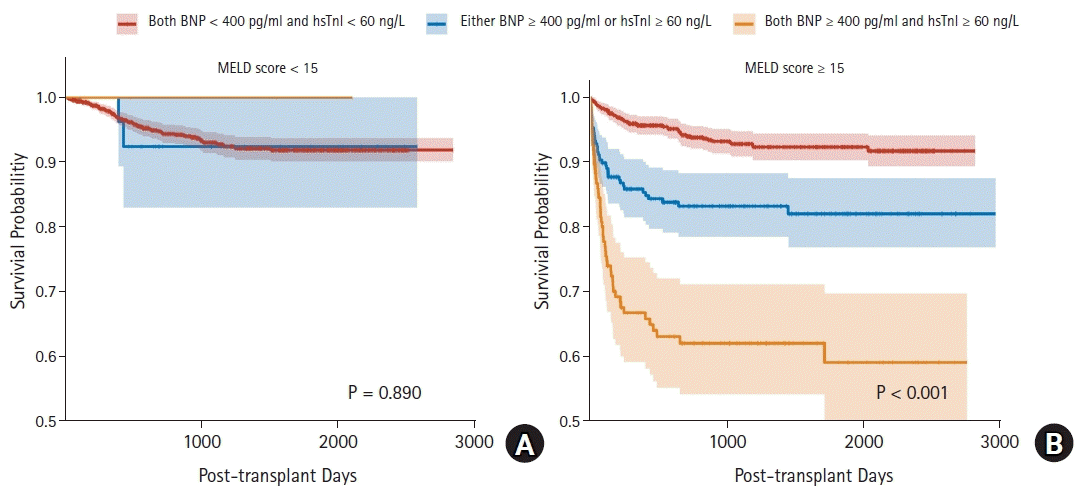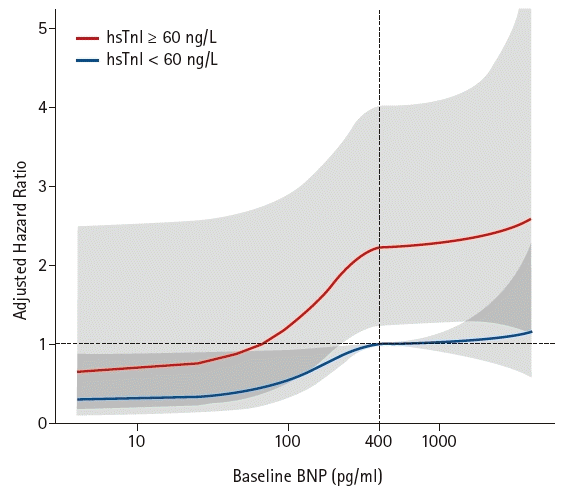1. VanWagner LB, Lapin B, Levitsky J, Wilkins JT, Abecassis MM, Skaro AI, et al. High early cardiovascular mortality after liver transplantation. Liver Transpl. 2014; 20:1306–16.

2. Kwon HM, Hwang GS. Cardiovascular dysfunction and liver transplantation. Korean J Anesthesiol. 2018; 71:85–91.

3. Moon YJ, Kwon HM, Jung KW, Jeong HW, Park YS, Jun IG, et al. Risk stratification of myocardial injury after liver transplantation in patients with computed tomographic coronary angiography-diagnosed coronary artery disease. Am J Transplant. 2019; 19:2053–66.

4. Wiesner R, Edwards E, Freeman R, Harper A, Kim R, Kamath P, et al. Model for end-stage liver disease (MELD) and allocation of donor livers. Gastroenterology. 2003; 124:91–6.

5. Mahmud N, Goldberg DS. Declining predictive performance of the MELD: Cause for concern or reflection of changes in clinical practice? Am J Transplant. 2019; 19:3221–2.

6. VanWagner LB, Harinstein ME, Runo JR, Darling C, Serper M, Hall S, et al. Multidisciplinary approach to cardiac and pulmonary vascular disease risk assessment in liver transplantation: an evaluation of the evidence and consensus recommendations. Am J Transplant. 2018; 18:30–42.

7. Weber M, Luchner A, Seeberger M, Mueller C, Liebetrau C, Schlitt A, et al. Incremental value of high-sensitive troponin T in addition to the revised cardiac index for peri-operative risk stratification in non-cardiac surgery. Eur Heart J. 2013; 34:853–62.

8. Gillmann HJ, Meinders A, Grohennig A, Larmann J, Bunte C, Calmer S, et al. Perioperative levels and changes of high-sensitivity troponin T are associated with cardiovascular events in vascular surgery patients. Crit Care Med. 2014; 42:1498–506.

9. Zimmerman AM, Marwaha J, Nunez H, Harrington D, Heffernan D, Monaghan S, et al. Preoperative myocardial injury as a predictor of mortality in emergency general surgery: an analysis using the American College of Surgeons NSQIP Database. J Am Coll Surg. 2016; 223:381–6.

10. Kristensen SD, Knuuti J, Saraste A, Anker S, Bøtker HE, De Hert S, et al. 2014 ESC/ESA Guidelines on non-cardiac surgery: cardiovascular assessment and management: The Joint Task Force on non-cardiac surgery: cardiovascular assessment and management of the European Society of Cardiology (ESC) and the European Society of Anaesthesiology (ESA). Eur J Anaesthesiol. 2014; 31:517–73.
11. Duceppe E, Parlow J, MacDonald P, Lyons K, McMullen M, Srinathan S, et al. Canadian Cardiovascular Society Guidelines on perioperative cardiac risk assessment and management for patients who undergo noncardiac surgery. Can J Cardiol. 2017; 33:17–32.

12. Zhao J, Li S, Ren L, Guo X, Qi X. Pro-brain natriuretic peptide and troponin t-hypersensitivity levels correlate with the severity of liver dysfunction in liver cirrhosis. Am J Med Sci. 2017; 354:131–9.

13. Park J, Lee SH, Han S, Kim KY, Kim GE, Park M, et al. Elevated high-sensitivity troponin I during living donor liver transplantation is associated with postoperative adverse outcomes. Transplantation. 2018; 102:e236–44.

14. Park J, Lee SH, Han S, Jee HS, Lee SK, Choi GS, et al. Preoperative cardiac troponin level is associated with all-cause mortality of liver transplantation recipients. PLoS One. 2017; 12:e0177838.

15. Laska E, Meisner M, Wanderling J. A maximally selected test of symmetry about zero. Stat Med. 2012; 31:3178–91.

16. Delgado J, Pereira A, Villamor N, Lopez-Guillermo A, Rozman C. Survival analysis in hematologic malignancies: Recommendations for clinicians. Haematologica. 2014; 99:1410–20.

17. Dutkowski P, Oberkofler CE, Slankamenac K, Puhan MA, Schadde E, Mullhaupt B, et al. Are there better guidelines for allocation in liver transplantation? a novel score targeting justice and utility in the model for end-stage liver disease era. Ann Surg. 2011; 254:745–53.
18. Sarkar M, Watt KD, Terrault N, Berenguer M. Outcomes in liver transplantation: does sex matter? J Hepatol. 2015; 62:946–55.

19. Hoehn RS, Wilson GC, Wima K, Hohmann SF, Midura EF, Woodle ES, et al. Comparing living donor and deceased donor liver transplantation: a matched national analysis from 2007 to 2012. Liver Transpl. 2014; 20:1347–55.

20. Hwang S, Lee SG, Joh JW, Suh KS, Kim DG. Liver transplantation for adult patients with hepatocellular carcinoma in Korea: comparison between cadaveric donor and living donor liver transplantations. Liver Transpl. 2005; 11:1265–72.

21. Morioka D, Egawa H, Kasahara M, Ito T, Haga H, Takada Y, et al. Outcomes of adult-to-adult living donor liver transplantation: a single institution’s experience with 335 consecutive cases. Ann Surg. 2007; 245:315–25.
22. Li C, Mi K, Wen TF, Yan LN, Li B, Wei YG, et al. Risk factors and outcomes of massive red blood cell transfusion following living donor liver transplantation. J Dig Dis. 2012; 13:161–7.

23. Iwata H, Mizuno S, Ishikawa E, Tanemura A, Murata Y, Kuriyama N, et al. Negative prognostic impact of renal replacement therapy in adult living-donor liver transplant recipients: preoperative recipient condition and donor factors. Transplant Proc. 2014; 46:716–20.

24. An HJ, Jang JW, Bae SH, Choi JY, Yoon SK, Lee MA, et al. Serum C-reactive protein is a useful biomarker for predicting outcomes after liver transplantation in patients with hepatocellular carcinoma. Liver Transpl. 2012; 18:1406–14.

25. Feng S, Goodrich NP, Bragg-Gresham JL, Dykstra DM, Punch JD, DebRoy MA, et al. Characteristics associated with liver graft failure: the concept of a donor risk index. Am J Transplant. 2006; 6:783–90.

26. Rana A, Hardy MA, Halazun KJ, Woodland DC, Ratner LE, Samstein B, et al. Survival outcomes following liver transplantation (SOFT) score: a novel method to predict patient survival following liver transplantation. Am J Transplant. 2008; 8:2537–46.

27. Kiuchi T, Tanaka K, Ito T, Oike F, Ogura Y, Fujimoto Y, et al. Small-for-size graft in living donor liver transplantation: how far should we go? Liver Transpl. 2003; 9:S29–35.

28. Maisel AS, Krishnaswamy P, Nowak RM, McCord J, Hollander JE, Duc P, et al. Rapid measurement of B-type natriuretic peptide in the emergency diagnosis of heart failure. N Engl J Med. 2002; 347:161–7.

29. Chae MS, Koo JM, Park CS. Predictive role of intraoperative serum brain natriuretic peptide for early allograft dysfunction in living donor liver transplantation. Ann Transplant. 2016; 21:538–49.
30. York MK, Gupta DK, Reynolds CF, Farber-Eger E, Wells QS, Bachmann KN, et al. B-type natriuretic peptide levels and mortality in patients with and without heart failure. J Am Coll Cardiol. 2018; 71:2079–88.
31. Krichevskiy LA, Kozlov IA. Natriuretic peptides in cardiac anesthesia and intensive care. J Cardiothorac Vasc Anesth. 2019; 33:1407–19.

32. Larsen AI, Dickstein K. BNP in acute coronary syndromes: the heart expresses its suffering. Eur Heart J. 2004; 25:1284–6.

33. Karthikeyan G, Moncur RA, Levine O, Heels-Ansdell D, Chan MT, Alonso-Coello P, et al. Is a pre-operative brain natriuretic peptide or N-terminal pro-B-type natriuretic peptide measurement an independent predictor of adverse cardiovascular outcomes within 30 days of noncardiac surgery? A systematic review and meta-analysis of observational studies. J Am Coll Cardiol. 2009; 54:1599–606.
34. Rodseth RN, Lurati Buse GA, Bolliger D, Burkhart CS, Cuthbertson BH, Gibson SC, et al. The predictive ability of pre-operative B-type natriuretic peptide in vascular patients for major adverse cardiac events: an individual patient data meta-analysis. J Am Coll Cardiol. 2011; 58:522–9.

35. Toussaint A, Weiss E, Khoy-Ear L, Janny S, Cohen J, Delefosse D, et al. Prognostic value of preoperative brain natriuretic peptide serum levels in liver transplantation. Transplantation. 2016; 100:819–24.

36. Mandell MS, Kay J. High-sensitivity troponins in liver transplantation: How will they change our practice? Transplantation. 2018; 102:716–7.
37. Dolgin NH, Martins PN, Movahedi B, Lapane KL, Anderson FA, Bozorgzadeh A. Functional status predicts postoperative mortality after liver transplantation. Clin Transplant. 2016; 30:1403–10.

38. Serper M, Bittermann T, Rossi M, Goldberg DS, Thomasson AM, Olthoff KM, et al. Functional status, healthcare utilization, and the costs of liver transplantation. Am J Transplant. 2018; 18:1187–96.

39. Lai JC, Sonnenday CJ, Tapper EB, Duarte-Rojo A, Dunn MA, Bernal W, et al. Frailty in liver transplantation: an expert opinion statement from the American Society of Transplantation Liver and Intestinal Community of Practice. Am J Transplant. 2019; 19:1896–906.

40. Maile MD, Jewell ES, Engoren MC. Timing of preoperative troponin elevations and postoperative mortality after noncardiac surgery. Anesth Analg. 2016; 123:135–40.









 PDF
PDF Citation
Citation Print
Print



 XML Download
XML Download